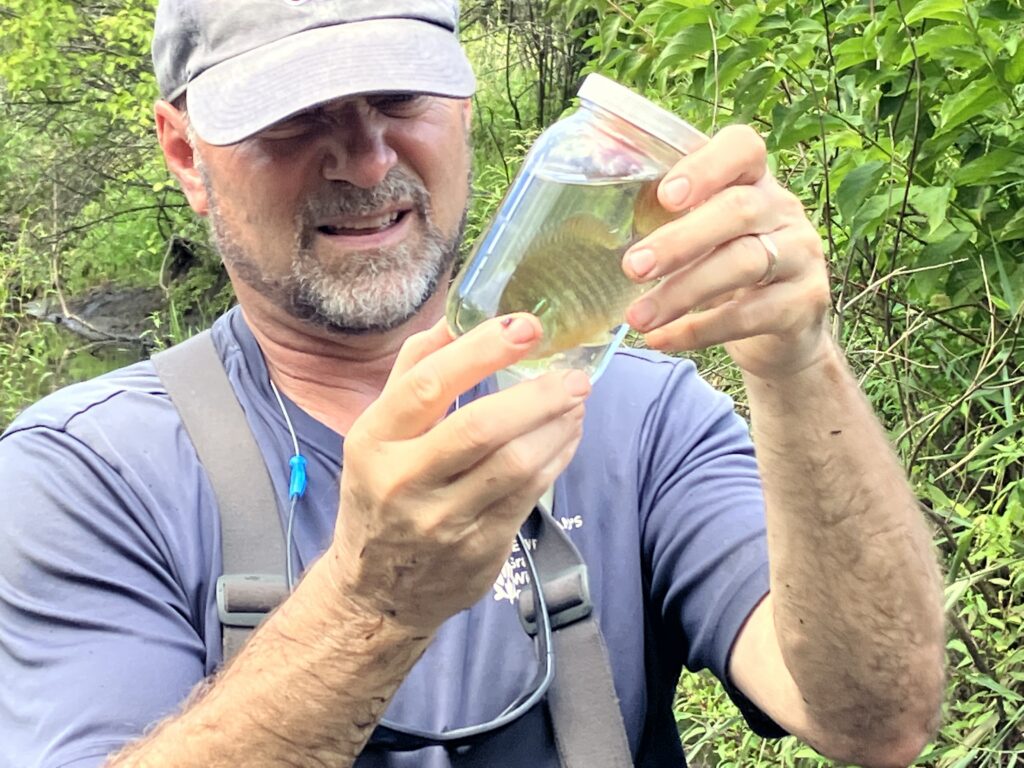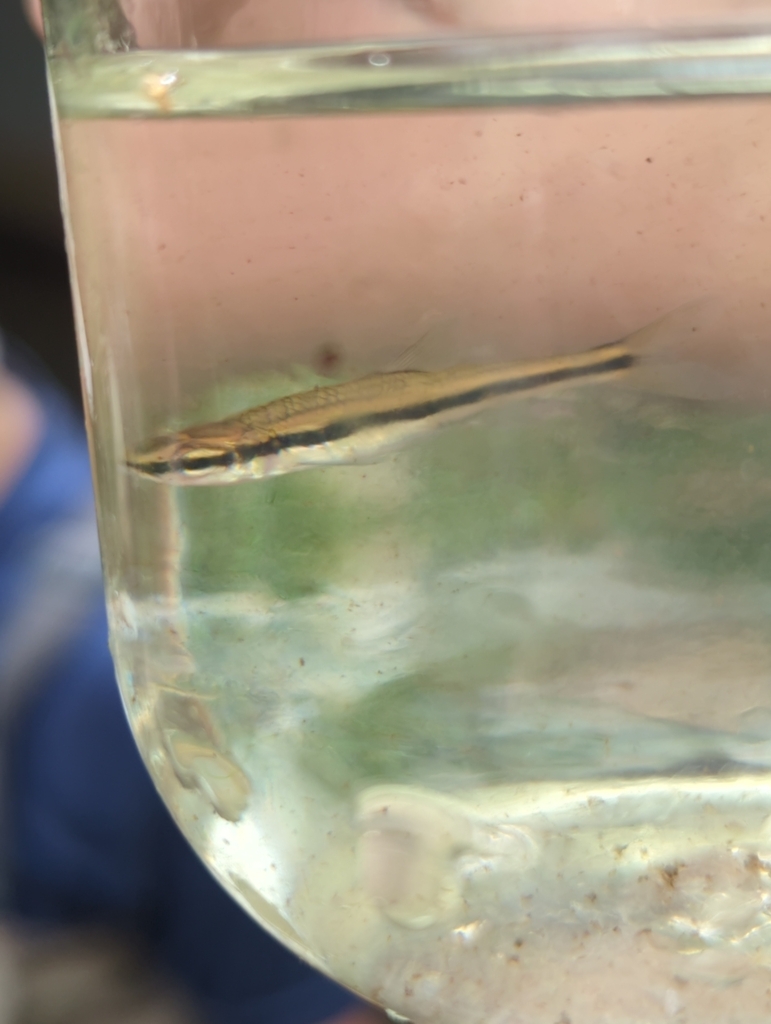Over the past few weeks, our team has been surveying for rare fish in the waterways of Massachusetts on top of our normal turtle monitoring work. Two fish species in particular are subjects of continued interest for ZNE Field Conservation: threespine sticklebacks and bridle shiners.
Longtime readers will recall that we regularly conduct population surveys on a small population of threespine stickleback fish in an urban park within Boston itself. Threespine sticklebacks are not rare fish; in fact, they can be found abundantly along the coastlines of most northern oceans. What makes these sticklebacks remarkable is that they are living in a totally freshwater pond, probably as a result of ancient glaciation isolating them from the ocean. In this tiny haven, they have multiplied and evolved, and have become the only fully freshwater population of this fish species to be found for miles in any direction. As a result, this small population takes on large importance. Our team used minnow traps and a seine net to scour several nearby ponds connected to the one with the sticklebacks to see if we could find evidence of the fish in any other waterways. Our surveys found bluegill sunfish and pickerel, but no other sticklebacks so far. Low water levels during this drought year may be a factor in the reluctance of sticklebacks to move around very much.

In contrast to the sticklebacks, bridle shiners are rare fish in Massachusetts, and are freshwater specialists. These sleek, large-eyed minnows inhabit clear streams with lots of submerged vegetation, where they can hide from predators and ambush their small invertebrate prey. Because they are visual hunters that depend on clean water, healthy plant life, and abundant prey to thrive, bridle shiners are vulnerable to many common environmental factors that impact aquatic systems. Pesticides, erosion and siltation, invasive predatory fish, and the alteration of river courses by humans can all negatively impact bridle shiners.

Across two days of surveys throughout a river system where bridle shiners were known to be just ten years ago, our biologists found many interesting fish, including the related golden shiner, several species of sunfish, and fallfish.
We found bridle shiners, too – but in nowhere near the numbers they used to occur. Our team caught fewer than ten bridle shiners, which suggests that changes to their river homes are reducing the population of this already-rare fish species. We will continue to survey for bridle shiners at this and other sites around the state, as well as studying and protecting threespine sticklebacks and other natural treasures.


